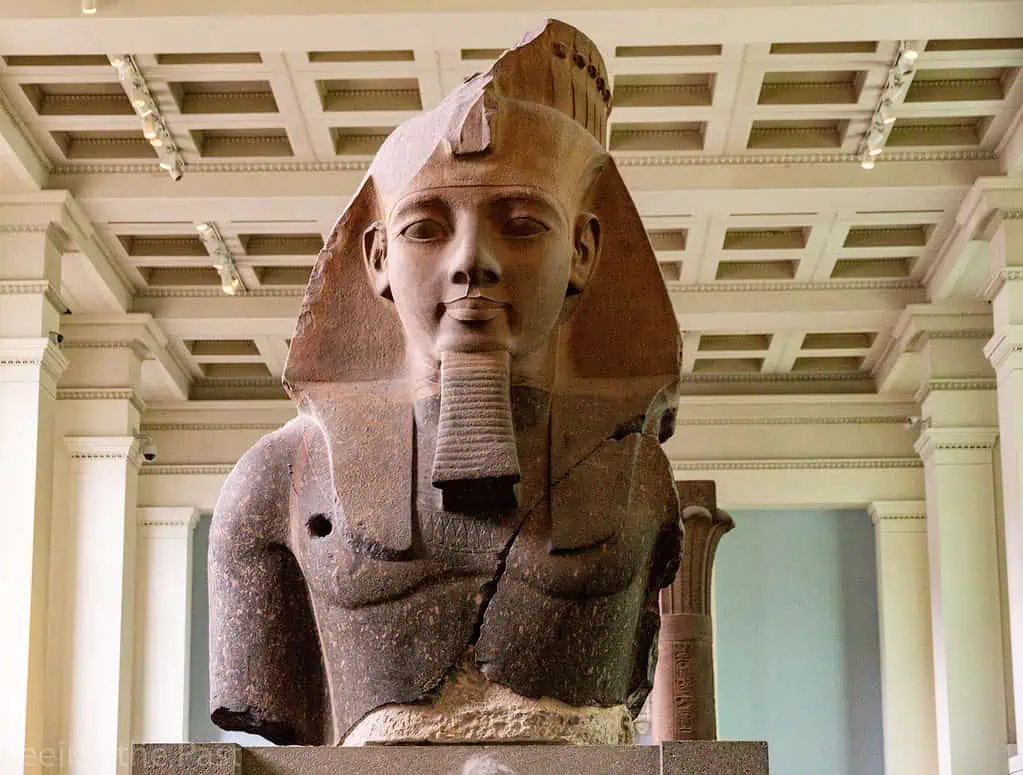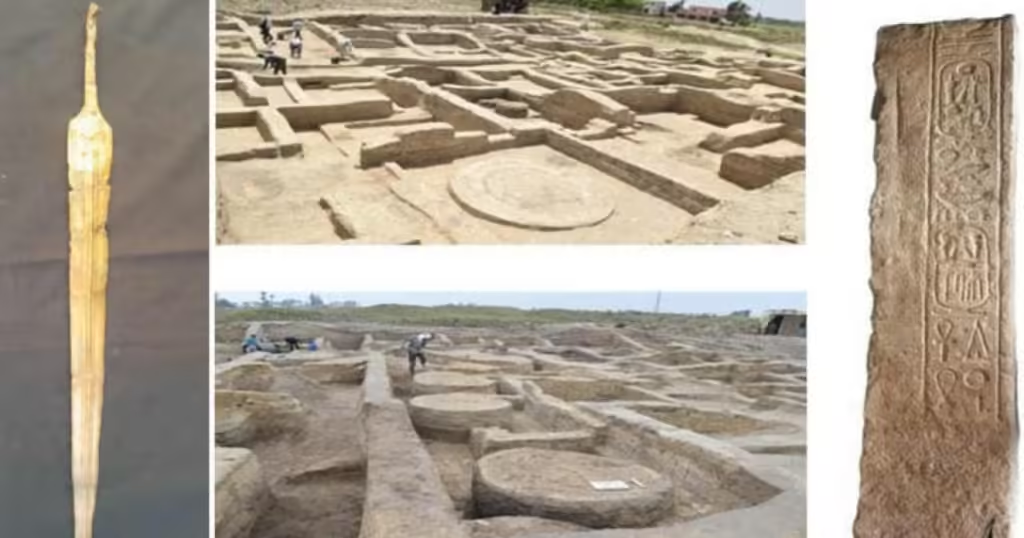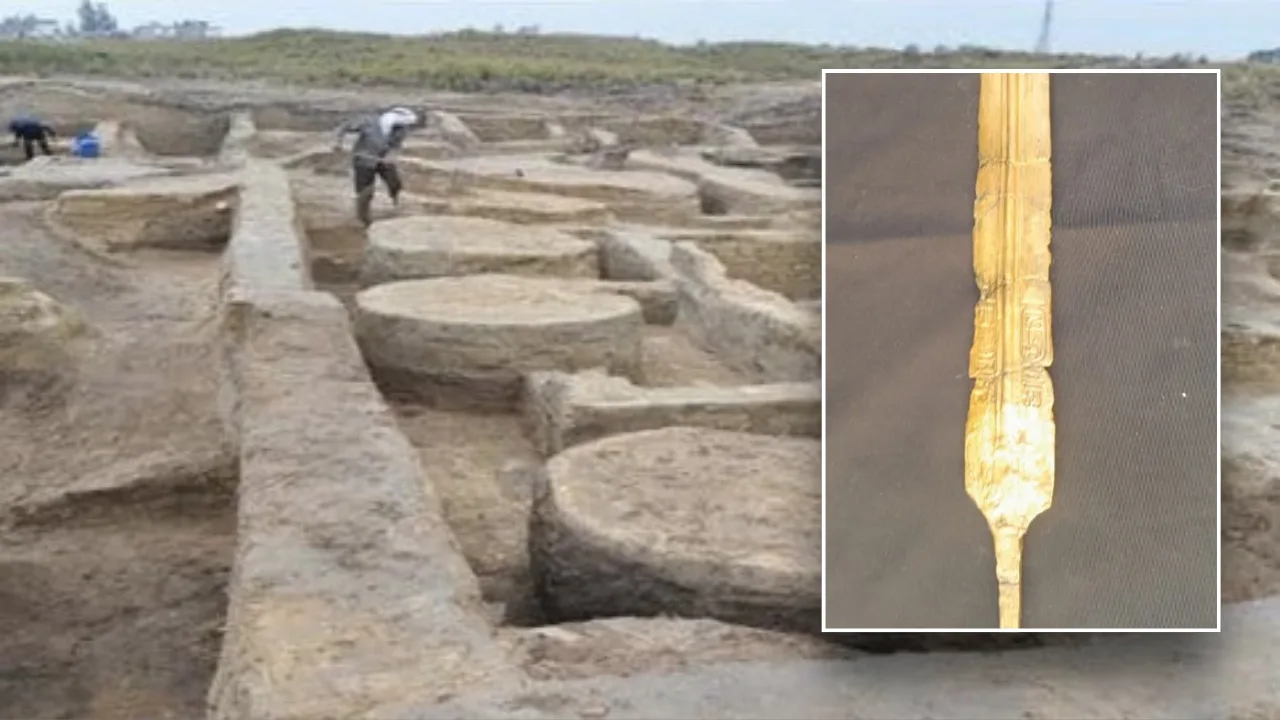3,200-Year-Old Ancient Egyptian Barracks Unearthed: Sword Inscribed with ‘Ramesses II’ Found
Cairo, Egypt – Archaeologists have made a groundbreaking discovery at the Tell Al-Abqain excavation site in the northwest Nile Delta: the remains of a 3,200-year-old military barracks. Among the numerous artefacts unearthed, a bronze sword inscribed with the name of Pharaoh Ramesses II stands out, shedding new light on the military strategies and historical significance of his reign.
A Strategic Military Outpost

The barracks, constructed during the reign of Ramesses II (1279-1213 BCE), were strategically located along a military road to protect Egypt’s northwestern borders from potential invaders, such as Libyan tribes and the enigmatic Sea Peoples. This discovery underscores the advanced military architecture and strategic planning of ancient Egypt, showcasing their ability to use the landscape to their advantage.
The Significance of the Sword
The bronze sword, engraved with Ramesses II’s cartouche—a hieroglyphic signature indicating royal ownership—was likely awarded to a high-ranking officer. This artifact not only symbolizes the pharaoh’s power and generosity but also serves as a testament to the military prowess and prestige of Ramesses II’s reign. Peter Brand, a historian at the University of Memphis, noted, “The king’s name and titles engraved on it increased the prestige of its owner and ‘advertised’ the king’s wealth, power, and generosity”.
Historical Context and Military Strategies

Ramesses II, often referred to as Ramesses the Great, is renowned for his military campaigns and monumental building projects. His reign was marked by significant military engagements, including battles against the Hittites and campaigns in the Levant. The construction of these barracks is believed to have been a direct response to growing threats from the Libyans, highlighting the pharaoh’s proactive approach to national defense.
The barracks contained storerooms filled with grain, large ovens, and pottery with animal remains, indicating a well-supplied and self-sufficient military outpost. The presence of cow bones, which were likely butchered, dried, and stored for later consumption, further emphasizes the logistical planning that went into maintaining the garrison.
Broader Implications for Egyptian History
This discovery provides invaluable insights into the military logistics and daily life of soldiers during Ramesses II’s reign. Mohamed Ismail Khaled, secretary-general of Egypt’s Supreme Council of Antiquities, described the site as a key military outpost in ancient Egypt’s defence system. The advanced architectural layout of the barracks, along with the religious tributes and personal effects found, paints a vivid picture of military life during this period.
The excavation also revealed two inscribed limestone blocks, one bearing the name of Ramesses II and the other mentioning an official named Bay, who rose to prominence during the reign of Seti II, Ramesses’ successor. These inscriptions provide additional historical context, linking the barracks to a broader narrative of external threats and internal administration.
Expert Commentary
Peter Brand emphasized the broader implications of this find, stating, “It’s an important discovery for understanding the strategy and especially the logistics of Egypt’s military under Ramesses II”. The well-preserved state of the barracks offers a rare glimpse into the military infrastructure of ancient Egypt, contributing significantly to our understanding of the pharaoh’s legacy.
This remarkable discovery not only enriches our knowledge of ancient Egyptian military history but also highlights the enduring legacy of one of Egypt’s most celebrated pharaohs. As archaeologists continue to uncover more artifacts and details, the story of Ramesses II’s reign and his military strategies will undoubtedly become even clearer.
More Interesting Articles
Putin and Mongolia Defy ICC Arrest Warrant: Ukraine War Briefing Amidst International
Israel Launches Major West Bank Military Operation, Resulting in Nine Palestinian Deaths
Balochistan in Turmoil: A Surge of Violence Threatens Pakistan’s Stability
Hindus in Peril: Bangladesh Hindus Descends into Religious Violence After Political Upheaval
Kursk Region: Ukrainian Military Offensive Expands, Marking a New Phase in the Conflict
Tensions Ignite: Israeli Official Declares Iran War ‘Inevitable,’ Urges U.S. Preemptive Strike
Kursk Region Gains: Top Ukrainian Commander Reveals Major Territorial Advances
Former ISI Chief Faiz Hameed Arrested: Unprecedented Court-Martial Initiated
Iconic Statue Commemorating Pakistan Army’s 1971 Surrender Vandalized in Bangladesh
Rising Tides of Protest: Hindus in Bangladesh Demand Justice Amidst Escalating Violence
Hindenburg Research Under the Microscope: Uncovering Allegations of Bias and Destabilization
Top 10 Best Performing Equity-Oriented Mutual Funds in July 2024: Unmissable Winners and Stellar
CrowdStrike and Microsoft Disruption Sparks Global Chaos: A Major Incident Unfolds
European Union to Strongly Warn Elon Musk’s X for Failing to Combat Dangerous Content
Paramount Global to Merge with Skydance Media in a Game-Changing $28 Billion Deal
Discover more from News 24 Media
Subscribe to get the latest posts sent to your email.


